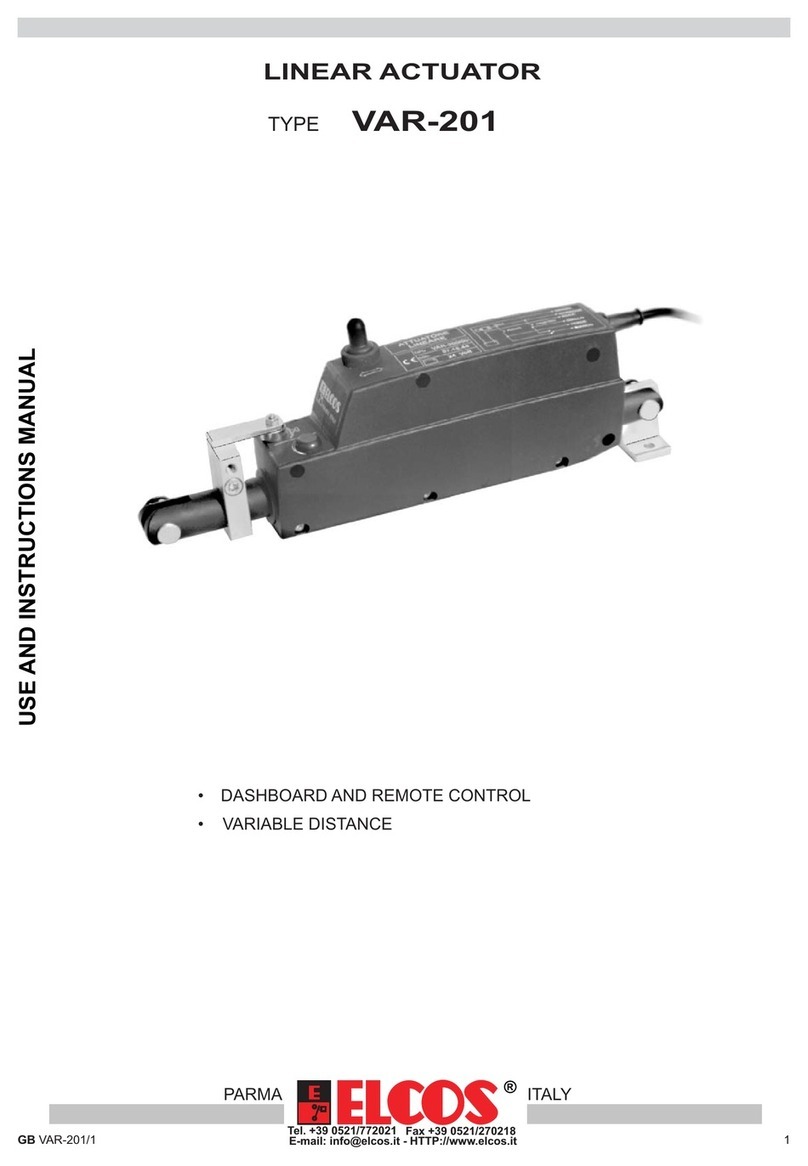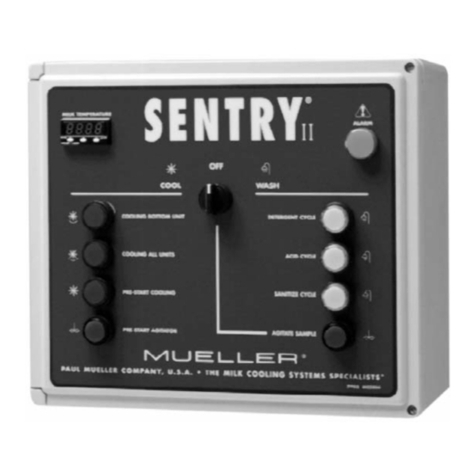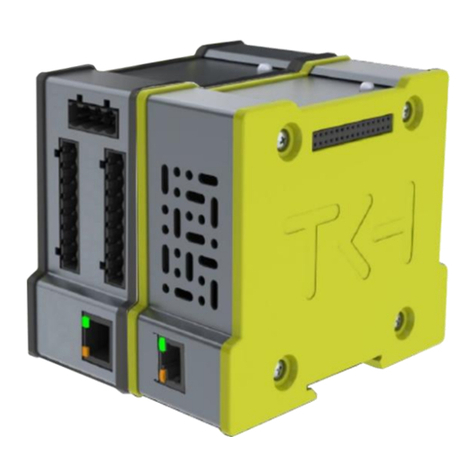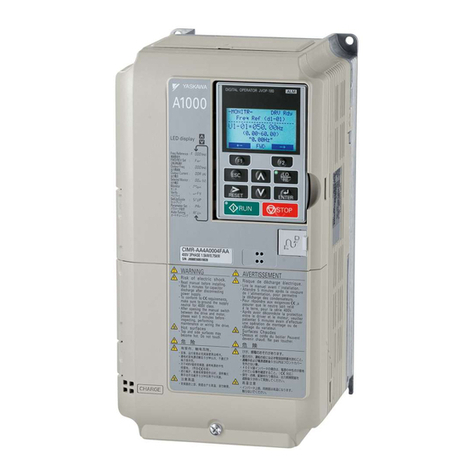EDI CMUip-2212 Series User manual

THIS MANUAL CONTAINS TECHNICAL INFORMATION FOR
THE CMUip-2212-HV, CMUip-2212-LV, and CMUip-2212-VHV
ATC CABINET MONITOR UNIT.
Firmware Version 2.0 (vXX20) Issue J PCB
REVISION: MAY 2019
pn 888-2212-001
CMUip-2212
ATCC Cabinet Monitor Unit
Operations Manual
- NOTE -
EDI ECCOM SOFTWARE MUST BE UPDATED TO VERSION 4.5 OR HIGHER.
EDI MONITORKEY SOFTWARE MUST BE UPDATED TO VERSION 2.6 OR HIGHER.
EDI SOFTWARE IS AVAILABLE AT WWW.EDITRAFFIC.COM

THE CMUip-2212 SERIES CABINET MONITOR UNIT IS DESIGNED AND
MANUFACTURED IN THE USA BY
EBERLE DESIGN INC.
PHOENIX, ARIZONA.
EDI IS CERTIFIED TO ISO 9001:2016 QUALITY SYSTEMS STANDARDS.
IPACK AND LEDguard ARE REGISTERED TRADEMARKS OF EDI. DATAKEY AND
KEYCEPTICLE ARE TRADEMARKS OF DATAKEY INC. INFORMATION CONTAINED
HEREIN IS PROPRIETARY TECHNICAL INFORMATION OF EBERLE DESIGN INC.
PUBLICATION, REPRODUCTION OR USE IN WHOLE OR PART IS NOT PERMITTED
EXCEPT UNDER TERMS AGREED UPON IN WRITING.
©COPYRIGHT 2019 EDI
U.S. Pat. No. 7,246,037
Canadian Patent No. 2,574,101
U.S. Pat. No. 9,460,620
US Pat. No. 10,262,531
MAINTENANCE NOTE
THIS CABINET MONITOR UNIT HAS BEEN CAREFULLY INSPECTED AND
TESTED TO ENSURE PROPER OPERATION. IT IS RECOMMENDED THAT
THE CABINET MONITOR UNIT BE TESTED AT LEAST ANNUALLY TO
ENSURE PROPER OPERATION AND COMPLIANCE WITH FACTORY
SPECIFICATIONS.

Table of Contents
Section 1 GENERAL ......................................................................................................... 1
1.1 Overview ................................................................................................................ 1
1.2 Channel Configuration............................................................................................ 1
1.3 High Density Switch Pack (HDSP).......................................................................... 1
1.4 High Density Flasher Unit (HDFU).......................................................................... 2
1.5 CMUip-2212 Programming..................................................................................... 2
1.6 Detailed CMU Status.............................................................................................. 2
1.6.1 ECcom Software Interface ............................................................................ 2
1.6.2 Auxiliary Display Unit .................................................................................... 2
1.7 Serial Bus #1.......................................................................................................... 3
1.7.1 Serial Bus #1 Message Types....................................................................... 3
1.8 Serial Bus #3.......................................................................................................... 3
1.8.1 Serial Bus #3 Message Types....................................................................... 3
1.9 Failed State Action (LFSA, LFSA-R, NFSA) ........................................................... 4
1.9.1 Exit From FSA............................................................................................... 4
Section 2 MONITOR FUNCTIONS .................................................................................... 5
2.1 Cabinet Power Supply Monitor ............................................................................... 5
2.2 Conflicting Channels Monitor.................................................................................. 5
2.3 Serial Bus Monitor.................................................................................................. 5
2.3.1 Serial Bus #1 Error........................................................................................ 5
2.3.2 Serial Bus #3 Error........................................................................................ 5
2.4 Type 62 FSA Message........................................................................................... 6
2.5 Lack of Signal Inputs Monitor ................................................................................. 6
2.6 Multiple Input Monitor ............................................................................................. 6
2.7 Yellow Clearance Monitor....................................................................................... 6
2.8 Yellow Plus Red Clearance Monitor ....................................................................... 7
2.9 Local Flash Status.................................................................................................. 7
2.9.1 Local Flash Status Recovery......................................................................... 7
2.10 Circuit Breaker Trip Status ................................................................................... 7
2.11 Flasher Unit Output Failed Alarm.......................................................................... 7
2.12 CMU Power Failure .............................................................................................. 8
2.12.1 Mains Voltage Level Sense......................................................................... 8
2.12.2 Power Interrupt ........................................................................................... 8
2.12.3 Power Recovery.......................................................................................... 8
2.12.4 Power Up .................................................................................................... 8
2.12.5 Minimum Flash Interval ............................................................................... 8
2.13 Field Output Check............................................................................................... 8
2.13.1 Field Check Mode ....................................................................................... 9
2.13.2 Field Check Status ...................................................................................... 9
2.14 Diagnostic Error ................................................................................................... 9
2.14.1 Ram Memory Diagnostic............................................................................. 9
2.14.2 Nonvolatile Memory Diagnostic ................................................................... 9
2.14.3 Datakey Memory Diagnostic.......................................................................10
2.14.4 Internal MPU Monitor .................................................................................10
2.15 Recurrent Pulse Detection...................................................................................10
2.15.1 Recurrent Pulse Detection Disable.............................................................11
2.16 Flashing Yellow Arrow (FYA) Protected-Permissive Monitoring ...........................11
2.16.1 FYA Configuration......................................................................................11
2.16.1.1 Protected Turn Channel ....................................................................11
2.16.1.2 Permissive Turn Channel..................................................................11
2.16.1.3 Opposing Through Channel ..............................................................11
2.16.2 Configuring the CMUip-2212 Fault Parameters For FYA ............................11

2.16.2.1 Conflict .............................................................................................12
2.16.2.2 Red Fail ............................................................................................12
2.16.2.3 Dual Indication ..................................................................................12
2.16.2.4 Minimum Yellow Clearance...............................................................13
2.16.2.5 Yellow Plus Red Clearance...............................................................13
2.16.3 Red and Yellow Input Enable .....................................................................13
2.16.4 Flash Rate Detection..................................................................................13
2.16.5 FYA Yellow Trap Conflict Detection............................................................13
Section 3 INPUT SIGNALS ..............................................................................................15
3.1 LEDguard®Field Signal Sensing ...........................................................................15
3.2 Load Switch Current..............................................................................................15
3.3 PDA Control Signal Inputs.....................................................................................15
3.3.1 Local Flash Status .......................................................................................15
3.3.2 Main Contactor (MC) Coil Status..................................................................15
3.3.3 Main Contactor (MC) Secondary Status .......................................................15
3.3.4 FTR Coil Drive Status ..................................................................................16
3.3.5 Circuit Breaker (CB) Trip Status ...................................................................16
3.3.6 Front / Rear Door Switch..............................................................................16
3.4 Monitor Interlock....................................................................................................16
3.5 External Test Reset input ......................................................................................16
3.6 Serial Bus #1 Address Inputs ................................................................................16
3.7 Serial Bus #1 Disable input ...................................................................................17
3.8 CMUip-2212 Temperature.....................................................................................17
Section 4 FRONT PANEL DESCRIPTION .......................................................................18
4.1 Indicators ..............................................................................................................18
4.1.1 Power Indicator ............................................................................................18
4.1.2 48VDC FAIL Indicator ..................................................................................18
4.1.3 24VDC FAIL Indicator ..................................................................................18
4.1.4 12VDC FAIL Indicator ..................................................................................18
4.1.5 CONFLICT Indicator ....................................................................................18
4.1.6 LACK OF SIGNAL Indicator .........................................................................18
4.1.7 MULTIPLE Indicator.....................................................................................18
4.1.8 CU Indicator.................................................................................................18
4.1.9 LOCAL FLASH Indicator ..............................................................................18
4.1.10 CLEARANCE Indicator ..............................................................................19
4.1.11 FIELD CHECK Indicator.............................................................................19
4.1.12 SB #1 ERROR Indicator.............................................................................19
4.1.13 SB #3 ERROR Indicator.............................................................................19
4.1.14 DIAGNOSTIC Indicator ..............................................................................19
4.1.15 SB #1 RX Indicator.....................................................................................19
4.1.16 SB #3 RX Indicator.....................................................................................19
4.2 Reset Button .........................................................................................................19
4.3 Datakey.................................................................................................................19
Section 5 SPECIFICATIONS............................................................................................21
5.1 Electrical ...............................................................................................................21
5.1.1 CMU-2212-HV .............................................................................................21
5.1.2 CMU-2212-LV..............................................................................................22
5.1.3 CMU-2212-VHV ...........................................................................................22
5.2 Timing ...................................................................................................................23
5.3 Mechanical............................................................................................................24
5.4 Environmental .......................................................................................................24
Section 6 CONNECTOR ASSIGNMENTS........................................................................25
6.1 Main DIN Connector..............................................................................................25

6.1.1 CMUip-2212-HV & CMUip-2212-VHV Pin List..............................................25
6.1.2 CMUip-2212-LV Pin List...............................................................................25
6.2 CMUip-2212 Ethernet LAN Port ............................................................................26
6.2.1 Ethernet LAN Cable .....................................................................................26

CMUip-2212 Cabinet Monitor Unit
Operations Manual
Eberle Design Inc. Page 1
Section 1
GENERAL
1.1 OVERVIEW
The model CMUip-2212 Cabinet Monitor Unit (CMUip-2212) is the principle part of the ATC
Traffic Control Cabinet Monitoring System. It is resident in the Output Assembly and
communicates with the High Density Switch Packs (HDSP) located in each Output
Assembly via Serial Bus #3. The role of the CMUip-2212 is to query various cabinet
conditions and, if the application requires action, the CMUip-2212 will transfer control from
the Advanced Traffic Controller (ATC) to a flashing control mode. Applications include the
detection of, and response to, improper and conflicting signals and improper operating
voltages in a cabinet assembly caused by malfunctions of the (ATC), load switches, or miss
wiring of the cabinet.
The communications between the ATC and the CMUip-2212 via Serial Bus #1 plays an
integral role in ensuring safe and proper operation of the cabinet equipment as well as
providing important diagnostic functions used for trouble shooting malfunctioning
equipment.
1.2 CHANNEL CONFIGURATION
The CMUip-2212 can be configured to monitor up to 32 physical load switch channels of
three inputs per channel. Each channel is comprised of a Red / Dont Walk input, a Yellow
input, and a Green / Walk input.
When populated with fourteen or less HDSPs, an additional four virtual channels can be
programmed in the CMUip-2212 to provide a total of 32 logical channels.
1.3 HIGH DENSITY SWITCH PACK (HDSP)
The HDSP-FU (iPack®2202) provides the CMUip-2212 with voltage and current
measurements from each installed Output Assembly. Each HDSP has the capability to
measure and report field terminal voltages and load currents for two channels of three
outputs per channel. Each HDSP is configured by its Output Assembly address. For further
Service
Assembly
Output Assembly
ATC
CMU
H
D
S
P
H
D
S
P
H
D
S
P
H
D
S
P
H
D
S
P
H
D
S
P
H
D
S
P
H
D
S
P
H
D
F
U
H
D
S
P
H
D
S
P
H
D
S
P
H
D
S
P
H
D
S
P
H
D
S
P
H
D
S
P
H
D
S
P
H
D
F
U
SIU
SIU
Serial Bus #3
Serial Bus #1
Serial Bus #1
ADU

CMUip-2212 Cabinet Monitor Unit
Operations Manual
Eberle Design Inc. Page 2
information concerning the HDSP, see the Eberle Design iPack®HDSP-FU Operations
Manual (pn 888-2202-001).
1.4 HIGH DENSITY FLASHER UNIT (HDFU)
The HDSP-FU (iPack®2202) provides the CMUip-2212 with voltage and current
measurements from each installed HDFU flasher unit. Each HDFU has the capability to
measure and report field terminal voltages and load currents for two channels of two
outputs per channel. The HDFU is configured by its Output Assembly address. For further
information concerning the HDFU, see the Eberle Design iPack®HDSP-FU Operations
Manual (pn 888-2202-001).
1.5 CMUIP-2212 PROGRAMMING
The CMUip-2212 is individually configured using a removable nonvolatile memory device
called a Datakeytm (Datakey is a registered trademark of Datakey Electronics, Inc.). The
Datakey replaces the mechanical jumper or diode based program card used in
conventional signal monitors and provides an electronic method of programming the CMU-
2212. The Datakey contains a nonvolatile prom device that is read by the CMU-2212. The
Datakey itself is programmed by a separate programming device using a Personal
Computer program such as the Eberle Design MonitorKey product. See the Eberle Design
MonitorKey Operations Manual (pn 888-1212-001) for further details.
1.6 DETAILED CMU STATUS
1.6.1 ECCOM SOFTWARE INTERFACE
The front panel display of the CMUip-2212 provides limited operational status. Detailed
status is obtained through the front panel Ethernet port (CMUip-2212) using Eberle Design
ECcom Signal Monitor Communications software running on a personal computer. The
ECcom software provides access to real time monitor data such as current field signal
status, field terminal voltages, cabinet control voltages, channel load current status,
temperature, and fault status. Historical event logs and signal sequence logs are also
provided. See the EDI ECcom Operation Manual (pn 888-1000-001) for further details.
The ECcom Signal Monitor Communications software can be obtained from the Eberle
Design web site at www.EDItraffic.com.
1.6.2 AUXILIARY DISPLAY UNIT
The Eberle Design Auxiliary Display Unit (ADU) is a display module that provides an
enhanced user interface and SmartMonitor®technology for the ATCC Cabinet Monitor Unit
(CMU-2212) system. The Auxiliary Display Unit is intended to mount into a 1U space of the
19 inch rack of an ITS Cabinet. The ADU communicates with the CMUip-2212 via Serial
Bus #3. See the ADU Operation Manual (pn 888-0217-001) for details.
- WARNING -
The ATC must verify that all channels being driven by a Serial Interface Unit
(SIU) are being monitored by an enabled HDSP, and that each HDSP is
enabled by the programming in the CMU datakey.
Failure to provide this check may result in unmonitored load switch outputs.
This could occur as a result of improper configuration of the cabinet, improper
address assignment for one or more HDSP units, improper address assignment
for one or more SIU units, or improper programming of the ATC.

CMUip-2212 Cabinet Monitor Unit
Operations Manual
Eberle Design Inc. Page 3
1.7 SERIAL BUS #1
Serial Bus #1 provides a communication path between the CMUip-2212 to the ATC. The
communications between the ATC and the CMUip-2212 plays an integral role in ensuring
safe and proper operation of the cabinet equipment as well as providing important
diagnostic functions used for trouble shooting malfunctioning equipment. Standardized
communications can be broken into three categories; real time and latched fault status,
configuration verification, and malfunction detection and diagnosis.
Messages are defined that allow the ATC and the CMUip-2212 to perform redundant
checks on each other. The ATC has access to all CMUip-2212 information including field
signal input status, permissive programming, and fault status. This gives the ATC the
capability to provide a backup monitoring function and make enhanced event logging,
remote intersection monitoring, and remote diagnostics feasible. Similarly, the CMUip-2212
receives information from the ATC that corresponds to the output commands to the load
switches. This data allows the CMUip-2212 to better respond to and diagnose fault
situations.
1.7.1 SERIAL BUS #1 MESSAGE TYPES
The CMUip-2212 is compatible with the following message types:
Type 60 Module Identification Command / Type 188 Module Identification Response
Type 80 Module Description Command / Type 208 Module Description Response
Type 81 Load Switch Drivers Command / Type 209 CMU Status Response
Type 62 Set FSA Command / Type 190 FSA Response
Type 82 Get CMU Configuration Command / Type 210 CMU Configuration Response
Type 66 Time and Date Broadcast Command
Type 67 Load Switch Drivers Command / Type 195 CMU Short Status Response
1.8 SERIAL BUS #3
Serial Bus #3 is used to transfer data from a maximum of sixteen HDSP units and two High
Density Flasher Units (HDFU) to the CMU-2212. The CMUip-2212 will poll each HDSP for
its voltage and load current data every 32 milliseconds. The CMUip-2212 then maps the
retrieved data to the proper logical channel and evaluates the state of the field signals for
fault conditions.
1.8.1 SERIAL BUS #3 MESSAGE TYPES
The CMUip-2212 is compatible with the following message types:
Type 1 HDSP Status Command / Type 129 Status Response
Type 2 HDFU Status Command / Type 130 HDFU Response
Type 60 Module ID Command / Type 188 Module ID Response
Type 128 Negative Acknowledge Response

CMUip-2212 Cabinet Monitor Unit
Operations Manual
Eberle Design Inc. Page 4
1.9 FAILED STATE ACTION (LFSA, LFSA-R, NFSA)
When triggered by the detection of a fault condition that exists longer than the minimum
defined period, the CMUip-2212 will enter the Failed State Action (fault) mode causing the
OUTPUT relay to de-energize and the contacts on the OUTPUT NO pins to open. The
cabinet assembly should be wired such that the opening of the OUTPUT NO relay contacts
will cause an automatic switching of the field signal outputs from normal operation to
flashing operation.
Only Unit Reset from the Reset Button or EXTERNAL RESET TEST input will reset the
CMUip-2212 from a LATCHED FAILED STATE ACTION (LFSA). Only a Unit Reset from
the Reset Button or EXTERNAL RESET TEST input or a CMUip-2212 Power Fail will reset
a LATCHED RESETTABLE FAILED STATE ACTION (LFSA-R).
A NONLATCHED FAILED STATE ACTION (NFSA) will be reset if the fault conditions
causing the NFSA have been removed. An NFSA will last for the programmed Minimum
Flash time at a minimum.
Only one LFSA, LFSA-R or NFSA fault state will be set at any time.
1.9.1 EXIT FROM FSA
Prior to the CMUip-2212 transferring the OUTPUT NO contacts from the FSA state to the
No Fault state, a transition period of 500 milliseconds will occur. During the transition period
the OUTPUT NO contacts will be in the FSA state and the CMUip-2212 will set the Start-Up
Flash Call bit in the Type 209 (195) Frame to 1.At all other times the Start-Up Flash Call bit
of the Type 209 (195) Frame will be set to 0. This provides an early indication to the ATC
that exit from the FSA state is occurring and the start-up phases should be set.

CMUip-2212 Cabinet Monitor Unit
Operations Manual
Eberle Design Inc. Page 5
Section 2
MONITOR FUNCTIONS
2.1 CABINET POWER SUPPLY MONITOR
The CMUip-2212 will sense the Cabinet +48VDC, +24VDC and +12VDC power supply
sources. The CMUip-2212 will also sense the Cabinet +24VDC state as reported by each
HDSP. Voltages less than the threshold voltages for the Fault time or longer (section 5.2)
will cause a LFSA. A +48VDC, +24VDC failure or +12VDC failure during the programmed
Minimum Flash time or during a CMUip-2212 Power Failure will not cause a LFSA. The
CMUip-2212 will report the value of the +24 VDC and +12 VDC power supply sources in
the Type 209 response frame.
There is programming in the Datakey to disable +12 VDC and 48VDC power supply
monitoring.
2.2 CONFLICTING CHANNELS MONITOR
For purpose of conflict determination, an active signal on either of the Green/Walk or
Yellow inputs associated with any of the 32 channels will be considered as that channel
being active. The Datakey will contain the permissive channel pair programming.
When any conflicting channels are detected as concurrently active for less than the No
Fault time (section 5.2) the CMUip-2212 will not cause a LFSA. When any conflicting
channels are detected as concurrently active for the Fault time or longer (section 5.2), the
CMUip-2212 will cause a LFSA. For all other timing in between, the CMUip-2212 may or
may not cause a LFSA.
2.3 SERIAL BUS MONITOR
The CMUip-2212 communicates with both Serial Bus (SB) #1 and #3. In SB #1 the CMUip-
2212 is a Secondary device, polled by the ATC Primary device. On SB #1, the CMUip-2212
will respond to the Serial Bus #1 Address defined by the ADDRESS 0 and ADDRESS 1
pins. On SB #3 the CMUip-2212 is the Primary device, polling each HDSP or HDFU
Secondary device.
2.3.1 SERIAL BUS #1 ERROR
The CMUip-2212 will cause a FSA when a Type 81 or Type 67 Frame has not been
received from the ATC for greater than the Fault time (section 5.2). The first and second
failures in a 24-hour period will be a NFSA. The third failure in a 24-hour period will be a
LFSA-R. If a CMUip-2212 Power Fail resets the LFSA-R, the SB #1 failure count will be
reset to two, such that the next SB #1 timeout results in a LFSA-R.
A SB #1 timeout failure during the programmed Minimum Flash time or during a CMUip-
2212 Power Failure will not cause a FSA. The SB #1 Timeout function will be disabled if the
SB #1 DISABLE input is at a True (Low) state
2.3.2 SERIAL BUS #3 ERROR
The CMUip-2212 will cause a FSA when a Type 129 or Type 130 Frame has not been
received from each enabled HDSP for greater than the Fault time (section 5.2). The first
and second failures in a 24-hour period will be a NFSA. The third failure in a 24-hour period
will be a LFSA-R. If a CMUip-2212 Power Fail resets the LFSA-R, the SB #3 timeout count
will be reset to two, such that the next SB #3 timeout results in a LFSA-R.
A SB #3 timeout failure during the programmed Minimum Flash time or during a CMUip-
2212 Power Failure will not cause a FSA.

CMUip-2212 Cabinet Monitor Unit
Operations Manual
Eberle Design Inc. Page 6
2.4 TYPE 62 FSA MESSAGE
If the “N” bit is set in a Type 62 message, the CMUip-2212 will react by causing a NFSA.
The NFSA will remain until the receipt of a Message 62 with the “N” bit cleared or until the
CMUip-2212 is reset by a Unit Reset or CMUip-2212 Power Fail. The NFSA will last for the
programmed Minimum Flash time at a minimum.
If the “L” bit is set in a Type 62 message, the CMUip-2212 will react by causing a LFSA.
2.5 LACK OF SIGNAL INPUTS MONITOR
The CMUip-2212 will detect the absence of a required signal voltage on all the inputs of a
channel OR the absence of any required output load current. For voltage purposes a
required signal on the Green OR Yellow OR Red inputs associated with a channel will be
considered as that channel being Voltage Active. For load current purposes an output load
current above the programmed threshold for an output will be considered as that output
being Current Active. When a channel is not Voltage Active OR Current Active for less than
the No Fault time (section 5.2), the CMUip-2212 will not cause a LFSA. When a channel is
not Voltage Active OR Current Active for greater than the Fault time (section 5.2), the
CMUip-2212 will cause a LFSA.
If Virtual channels are used, then the Current Sense Unit (CSU) monitor function is
hardwired to the source outputs, before they are remapped. The CSU monitor function
should be programmed at the virtual channel positions (channels 29-32) and not the source
channel positions. An HDSP must not be installed into Output Assembly slots 15 and 16
when Virtual channels are used.
Lack of Signal Input monitoring will be disabled for all channels when the MC COIL
STATUS input is not active. There is programming in the Datakey to disable Lack of Signal
Input monitoring on a per output basis.
Lack of Signal Input monitoring will also be disabled for any channel which has the DARK
CHANNEL MAP bit set to "1" in the Datakey programming for the DARK CHANNEL MAP
addressed by the DARK CHANNEL MAP SELECT bits in a Type 81 (67) message.
2.6 MULTIPLE INPUT MONITOR
The CMUip-2212 will detect the presence of an active signal on two or more inputs of a
channel. When the presence of an active signal on two or more inputs of a channel is
detected for less than the No Fault time (section 5.2), the CMUip-2212 will not cause a
LFSA. When the presence of an active signal on two or more inputs to a channel is
detected for the Fault time (section 5.2) or longer, the CMUip-2212 will cause a LFSA.
Multiple Input monitoring will be disabled when the MC COIL STATUS input is not active.
There is programming in the Datakey to disable Multiple Indication monitoring on a color
combination basis (G+Y, Y+R, G+R) for each channel.
2.7 YELLOW CLEARANCE MONITOR
The CMUip-2212 will verify that the Yellow Change interval is at least 2.7 +/-0.1 seconds.
The Yellow Change interval consists of the duration of time in which the Yellow field signal
input is active in a sequence from Green to Yellow to Red. When the minimum Yellow
Change interval is not satisfied, the CMUip-2212 will cause a LFSA. The CMUip-2212 will
report a Skipped Yellow Clearance when the Yellow Change interval is less than 100
milliseconds. The CMUip-2212 will report a Short Yellow Clearance when the Yellow
Change interval is less than 2.7 +/- 0.1 seconds and greater than 100 milliseconds.

CMUip-2212 Cabinet Monitor Unit
Operations Manual
Eberle Design Inc. Page 7
Minimum Yellow Change interval monitoring will be disabled when the MC COIL STATUS
input is not active. There is programming in the Datakey to disable Minimum Yellow
Change interval monitoring on a per channel basis.
2.8 YELLOW PLUS RED CLEARANCE MONITOR
The CMUip-2212 will verify that the Yellow Change plus Red Clearance interval between
the end of an active Green/Walk signal and the beginning of the next conflicting
Green/Walk signal is at least 2.7 +/-0.1 seconds. When the minimum Yellow Change plus
Red Clearance interval is not satisfied, the CMUip-2212 will cause a LFSA.
Minimum Yellow Change plus Red Clearance monitoring will be disabled when the MC
COIL STATUS input is not active. There is programming in the Datakey to disable Minimum
Yellow Change plus Red Clearance interval monitoring on a per channel basis.
2.9 LOCAL FLASH STATUS
The CMUip-2212 will monitor the LF STATUS input. This input is used to indicate to the
CMUip-2212 that the cabinet should be placed into NFSA as a result of the AUTO/FLASH
switch being transferred to the FLASH position. When this signal is sensed as not active for
greater than the Fault time (section 5.2), the CMUip-2212 will cause a NFSA. When this
signal is sensed as not active for less than the No Fault time (section 5.2) the CMUip-2212
will not cause a NFSA.
During Local Flash Status mode, the Auxiliary Display Unit (ADU) will display the active
field signals. This can be helpful to verify that flash mode is active on all outputs
appropriately. Note that a short time delay will be introduced to the ADU display in this
mode.
2.9.1 LOCAL FLASH STATUS RECOVERY
Recovery from Local Flash Status NFSA will occur when this signal is sensed as active for
greater than the Fault time (section 5.2).
2.10 CIRCUIT BREAKER TRIP STATUS
The CMUip-2212 will monitor the CB TRIP STATUS input. When one or more circuit
breakers have tripped this input will go to the not-active state. When this signal is sensed
as not active for greater than the Fault time (section 5.2) the CMUip-2212 will cause a
LFSA. When this signal is sensed as not active for less than the No Fault time (section 5.2)
the CMUip-2212 will not cause a LFSA.
2.11 FLASHER UNIT OUTPUT FAILED ALARM
The CMUip-2212 will monitor the FLASHER 1-1, FLASHER 1-2, FLASHER 2-1, FLASHER
2-2 voltage states reported by each HDFU. A second HDFU (#2) may be installed as an
option and must be enabled in the configuration parameters. A failed state may indicate a
malfunction of the connector system or flash voltage bus or HDFU unit.
When a transition from the inactive state to the active state or a transition from the active
state to the inactive state is absent for greater than the Active time (section 5.2), the
CMUip-2212 will set a status bit in the Type 209 (195) frame. This alarm condition will not
cause a FSA. It should cause the appropriate response in the ATC. This status is non-
latching such that once a status bit has been set, the sensing of five valid transitions of the
input will clear the status bit.

CMUip-2212 Cabinet Monitor Unit
Operations Manual
Eberle Design Inc. Page 8
2.12 CMU POWER FAILURE
The CMUip-2212 will monitor the MAINS input and the NRESET and POWERDOWN
cabinet control inputs to determine a CMU Power Failure response. The POWERDOWN
signal in the False (low) state indicates loss of Mains voltage in the ATC. A CMU Power
Failure will be recognized when both the POWERDOWN and NRESET signals are False
(low) for greater than 100 ms or the MAINS voltage is below the dropout level.
The 24VDC Monitor function (section 2.1) will be disabled while the POWERDOWN signal
is in the False state. The 24VDC FAIL indicator will flash at a 2Hz rate (section 4.1.2).
2.12.1 MAINS VOLTAGE LEVEL SENSE
The CMUip-2212 will monitor the MAINS input and the LV+ or HV+ SIGNAL inputs reported
by each HDSP. When the CMUip-2212 MAINS voltage is less than the Dropout voltage
(section 5.1) for greater than Mains Level Sense timing (section 5.2) the CMUip-2212 will
cause a NFSA. Once NFSA has been set, the POWERDOWN and NRESET signals will
not be monitored until all Mains voltages have exceeded the Mains Restore voltage
(section 5.1).
2.12.2 POWER INTERRUPT
The CMUip-2212 will disable monitoring of the +12VDC and +24VDC power supply inputs
when either the POWERDOWN or NRESET input is False (low). When the POWERDOWN
and NRESET signals are both False (low) the CMUip-2212 will cause a NFSA.
2.12.3 POWER RECOVERY
When the POWERDOWN input is True (high) and the NRESET signal goes from False
(low) to True (high) the CMUip-2212 will begin timing the programmed Minimum Flash
Interval. During the Minimum Flash Interval the CMUip-2212 will be in NFSA.
2.12.4 POWER UP
Following initial application of MAINS voltage the CMUip-2212 will maintain a NFSA until
the POWERDOWN input is True (high) and the NRESET signal goes from False (low) to
True (high). The CMUip-2212 will then begin timing the programmed Minimum Flash
Interval. During the Minimum Flash Interval the CMU will be in NFSA.
2.12.5 MINIMUM FLASH INTERVAL
During the Minimum Flash Interval the CMUip-2212 will be in NFSA. The Minimum Flash
Interval will be programmed in the Datakey between the limits of 6 seconds to 16 seconds
with an incremental adjustment of 1 second. The CMUip-2212 will not set a FSA during the
Minimum Flash Interval.
2.13 FIELD OUTPUT CHECK
The Field Output Check is a continuous verification that the field signal output states set by
the ATC are properly driven to the signal loads and correctly sensed by the HDSP and
CMU-2212. It is an enhanced function made possible by the Serial Bus #1 communications
between the ATC and CMU-2212. The CMUip-2212 will receive a Type 81 (67) message
from the ATC that contains an image of the controller output commands to the load
switches. When a fault condition triggers the CMU-2212, the Type 81 (67) message
information received while the fault condition was being timed will be used by the CMUip-
2212 to determine whether the sensed field signal input status corresponded to the ATC
output commands. This diagnostic information may then be used to isolate whether the
fault condition was caused by an ATC malfunction or a failure in the load switch and/or field
wiring.

CMUip-2212 Cabinet Monitor Unit
Operations Manual
Eberle Design Inc. Page 9
The Field Output Check function is enabled for each channel input individually and provides
two modes of operation, Field Check Mode and Field Check Status.
2.13.1 FIELD CHECK MODE
The CMUip-2212 will compare the active states of the field signals with the states reported
by the ATC in the Type 81 (67) frame. When a mismatch is detected for less than the No
Fault time (section 5.2) the CMUip-2212 will not cause a LFSA. When a mismatch is
detected for greater than the Fault time (section 5.2), the CMUip-2212 will cause a LFSA.
The Field Check Mode is typically caused by a miss-wired or improperly configured cabinet.
When the Field Check Mode is detected the FIELD CHECK front panel indicator will be
illuminated solid.
Field Output Check monitoring will be disabled when the MC COIL STATUS input is not
active. There is programming in the Datakey to disable Field Output Check monitoring on a
channel input basis.
2.13.2 FIELD CHECK STATUS
The CMUip-2212 will compare the active states of the field signals with the states reported
by the CU in the Type 81 (67) frame. When a mismatch is detected while a Conflict, Lack of
Signal, or Multiple fault is timing, Field Check Status will be reported with the fault to
indicate the faulty channel(s) and color(s).
If a Conflict, Lack of Signal, or Multiple fault has triggered the CMUip-2212 to the fault
mode and the CMUip-2212 indicates that there is no Field Check Status, the ATC or ATC
programming is the most likely cause. The lack of Field Check Status indicates the ATC
drove the signals to an improper state. If a Conflict, Lack of Signal, or Multiple fault has
triggered the CMUip-2212 to the fault mode and the CMUip-2212 indicates that there is
Field Check Status, then cause of the malfunction can be isolated to the SIU, load switch,
field wiring, or signal load.
When Field Check Status is detected the FIELD CHECK front panel indicator will be flash
at a 2Hz rate.
Field Output Check monitoring will be disabled when the MC COIL STATUS input is not
active. There is programming in the Datakey to disable Field Output Check monitoring on a
channel input basis.
2.14 DIAGNOSTIC ERROR
The CMUip-2212 is provided with a resident series of self-check diagnostic capabilities.
When a Diagnostic fault is detected, a LFSA-R will be set and the DIAGNOSTIC indicator
illuminated. Should a Diagnostic error occur, other fault indicators that may be concurrently
displayed with the DIAGNOSTIC indicator may not be valid due to the nature of these
hardware and/or firmware failures.
2.14.1 RAM MEMORY DIAGNOSTIC
This test will verify that all RAM elements are operating correctly at power-up or following a
Unit Reset.
2.14.2 NONVOLATILE MEMORY DIAGNOSTIC
This test will verify that the nonvolatile flash ROM and event log eeprom contain the proper
data. The routine will perform a check on each ROM device and make a comparison with a
check value.

CMUip-2212 Cabinet Monitor Unit
Operations Manual
Eberle Design Inc. Page 10
2.14.3 DATAKEY MEMORY DIAGNOSTIC
This test will verify whether the non-volatile Datakey contains valid data. The routine will
perform a check on each nonvolatile memory element at power-up and whenever read and
make a comparison with a 16 bit Frame Check Sequence (FCS) procedure defined in
clause 4.6.2 of ISO/IEC 3309. Invalid data may result from corrupted Datakey contents, an
invalid FCS calculation, invalid parameter values, or a Datakey Protocol Version
incompatibility.
The Datakey not present will cause a LFSA and illuminate the DIAGNOSTIC indicator if the
DOOR SWITCH FRONT input is sensed as not active (door closed). The DIAGNOSTIC
indicator will flash at a rate of 2Hz if the Datakey is not present when the DOOR SWITCH
FRONT input is sensed as active (door open).
2.14.4 INTERNAL MPU MONITOR
The CMUip-2212 will monitor the operation of its microprocessor with an independent
circuit. At a minimum, the monitoring circuit will receive logic state transitions at least once
every 50 milliseconds from the microprocessor. When the logic state transition is not
received for 500 milliseconds the monitor circuit will force a LFSA-R and illuminate the
DIAGNOSTIC indicator.
2.15 RECURRENT PULSE DETECTION
This error detection function supplements the normal Conflict, Multiple, and Lack of Signal
monitoring algorithms for sensing faults that are intermittent or pulsing in nature. The RMS
signal detection algorithm is designed to filter out short term transients commonly found on
the electrical service and provide noise immunity against false signal detections. The
Recurrent Pulse detection function is designed to respond to fault conditions that are
intermittent in nature and do not meet the continuous timing requirements of the normal
detection algorithms, yet may still produce improper signal displays. These input conditions
are differentiated by their longer time constant and fault response times.
The figure below shows a simple example of a recurrent Conflict fault. Channel 2 Green is
detected active due to a malfunction of the load switch that caused the output to Aflicker@
On for 100 ms approximately every 200 ms. Because normal Conflict detection requires a
continuous fault of at least 350 ms duration, this event could go undetected. The Recurrent
Pulse detection algorithm will combine these pulses into one event and trigger a Conflict
fault once the longer recurrent timing threshold is exceeded.
When triggered by a recurrent fault condition, the Signal Monitor will enter the fault mode,
transfer the Output relay contacts to the Fault position, and illuminate the appropriate
CONFLICT, MULTIPLE, or LACK OF SIGNAL indicator. The unit will remain in the fault
mode until reset by the Reset button or the External Reset input. Fault response times will
vary depending on the pulse width and frequency of the recurrent inputs, but will range
from 1000 ms minimum to 10.4 seconds maximum. Recurrent Pulse detection can be
disabled with the SEL1 option jumper, see Section 2.15.1.

CMUip-2212 Cabinet Monitor Unit
Operations Manual
Eberle Design Inc. Page 11
2.15.1 RECURRENT PULSE DETECTION DISABLE
The Recurrent Pulse Detection function can be disabled by soldering a 0-ohm jumper into
position SEL1 on the CMUip-2212 printed circuit board. When the jumper is inserted,
Recurrent Pulse Detection is disabled. When the jumper is removed, Recurrent Pulse
Detection is enabled.
2.16 FLASHING YELLOW ARROW (FYA) PROTECTED-PERMISSIVE MONITORING
The CMUip-2212 is designed to monitor an intersection with up to eight approaches using
the four section Flashing Yellow Arrow (FYA) movement outlined by the NCHRP Research
Project 3-54 on Protected/Permissive signal displays with Flashing Yellow Arrows, and
complies with all requirements of NEMA Standard TS-2 Amendment 4-2012 Flashing
Yellow Arrow.
For monitoring purposes an FYA approach is logically defined as a four input “logical
channel” consisting of the solid Red Arrow, solid Yellow Arrow, flashing Yellow Arrow
(permissive), and solid Green Arrow (protected). A Flashing Yellow Arrow approach is
typically monitored using two load switches and two physical channels of the CMU-2212.
2.16.1 FYA CONFIGURATION
The following three clauses define the nomenclature used in this Section 2.16.1, as
described in NEMA Standard TS2-2016 Flashing Yellow Arrow.
2.16.1.1 PROTECTED TURN CHANNEL
The Protected Turn Channel of the FYA channel pair is composed of the solid
Green arrow (Ga) indication of the FYA Signal Output Group.
2.16.1.2 PERMISSIVE TURN CHANNEL
The Permissive Turn Channel of the FYA channel pair is composed of the solid Red
arrow (Ra), solid Yellow arrow (Ya), and the flashing Yellow arrow (fYa) indications
of the FYA Signal Output Group. The flashing Yellow arrow (fYa) indication will be
displayed as the Green input of the Permissive Turn Channel.
2.16.1.3 OPPOSING THROUGH CHANNEL
An Opposing Through channel is also associated with the FYA channel pair. The Opposing
Through channel is the channel that conflicts with the FYA Protected Turn Channel and is
permissive with the Permissive Turn Channel (flashing Yellow arrow).
2.16.2 CONFIGURING THE CMUIP-2212 FAULT PARAMETERS FOR FYA
The CMUip-2212 built-in Setup Wizard in the MonitorKey software will automatically
configure the fault configuration parameters for Red Fail, Dual Indication, Field Check, and
Minimum Y+R Clearance. The Flashing Yellow Arrow configuration settings should be
applied before running the MonitorKey Setup Wizard. The MonitorKey form for setting
the FYA parameters is shown below:
- NOTE -
The ATCC standard CMUip-2212 is defined to support six FYA approaches.
The CMUip-2212 firmware release vXX20 or higher must be installed in the
CMU to provide support for eight FYA approaches. ECcom and MonitorKey
software must be updated to v4.5+ and v2.6+ respectively. Consult the EDI
factory for further details.

CMUip-2212 Cabinet Monitor Unit
Operations Manual
Eberle Design Inc. Page 12
For an FYA channel pair the fault configuration parameters are applied to the Primary
channel with three inputs, Ra-Ya-fYa. The fault configuration parameters programmed for
the Sparse channel of the FYA pair with only one input, Ga, only affects the sparse
channel and not the Primary channel, and should be used only when the RY INPUT Enable
option is Enabled for that channel.
2.16.2.1 CONFLICT
The CMUip-2212 will verify that no conflicting channels to the solid Yellow arrow channel
(clearance) are active as determined by the Program Card compatibility programming of
the solid Yellow arrow channel of the pair except during the following sequences:
2.16.2.1.1 PROTECTED YELLOW CHANGE INTERVAL CONFLICT
During the Yellow change interval of the Protected Turn channel (Green arrow), the CMUip-
2212 will verify that no conflicting channels to the solid Yellow arrow channel (clearance)
are active as determined by the Permissive compatibility programming of the Protected
Turn channel (Green arrow) of the pair.
2.16.2.1.2 PERMISSIVE YELLOW CHANGE INTERVAL CONFLICT
During the Yellow change interval of the Permissive Turn channel (flashing Yellow arrow),
the CMUip-2212 will verify that no conflicting channels to the solid Yellow arrow channel
(clearance) are active as determined by the Permissive compatibility programming of the
Permissive Turn channel (flashing Yellow arrow).
2.16.2.2 RED FAIL
A Red Fail fault will occur if the solid Red Arrow AND solid Yellow Arrow AND flashing
Yellow Arrow AND solid Green Arrow all remain inactive for the Red Fail fault response
time. The fault status will be displayed for both channels of the FYA channel pair.
If the Red Fail function is enabled and the RY Input option is Enabled for the sparse
channel (Ga), then a Red Fail fault will occur if the Red AND Yellow AND Green all remain
inactive on the sparse channel for the Red Fail fault response time. The fault status will be
displayed for the sparse channel of the FYA pair.
2.16.2.3 DUAL INDICATION
A Dual Indication fault will occur if any two or more of the solid Red Arrow, solid Yellow
Arrow, flashing Yellow Arrow, or solid Green Arrow signal combinations are active

CMUip-2212 Cabinet Monitor Unit
Operations Manual
Eberle Design Inc. Page 13
simultaneously for the Dual Indication fault response time. The fault status will be displayed
for both channels of the FYA pair when the sparse channel input (Ga) is active.
If the RG, RY, or GY Dual Indication function is enabled and the RY Input option is enabled
for the sparse channel (Ga), then a Dual Indication fault will occur if any two or more of the
Red, Yellow, or Green inputs are active simultaneously on the sparse channel for the Dual
Indication fault response time. The fault status will be displayed for the sparse channel of
the FYA pair.
2.16.2.4 MINIMUM YELLOW CLEARANCE
A Yellow Clearance fault will be detected if the channel pair sequences from the protected
Green Arrow to the solid Red Arrow without a minimum clearance time on the solid Yellow
Arrow. The fault status will be displayed for the solid Yellow Arrow channel.
A Yellow Clearance fault will be detected if the channel pair sequences from the permissive
flashing Yellow Arrow to the solid Red Arrow without a minimum clearance time on the solid
Yellow Arrow. The fault status will be displayed for the solid Yellow Arrow channel.
If the Minimum Yellow Clearance function is enabled and the RY Input option is enabled for
the sparse channel (Ga), a Yellow Clearance fault will be detected if the sparse channel
sequences from the Green input to the solid Red input without a minimum clearance time
on the Yellow input. The fault status will be displayed for the sparse channel (Ga).
2.16.2.5 YELLOW PLUS RED CLEARANCE
The Minimum Yellow Plus Red Clearance function is not designed to operate with Flashing
Yellow Arrows. This function must be Disabled for the FYA channels that provide the
Permissive flashing Yellow arrow. This allows the CU to sequence from the Permissive Left
turn channel directly to the Protected Left Turn channel without a solid Yellow arrow
clearance interval.
2.16.3 RED AND YELLOW INPUT ENABLE
The Red and Yellow outputs of the sparse channel of an FYA channel pair are typically not
loaded with a signal head and thus left floating. In these cases the Red and Yellow inputs
for the sparse FYA channels can be forced to the Off state in the CMUip-2212 by default.
This simplifies the cabinet wiring such that the use of dummy cabinet loads or modifications
to the Output harness are not necessary.
If the Red and Yellow outputs of the sparse channel of an FYA channel pair are driving
signal loads (such as a hard wired right turn overlap) then they must be monitored by the
CMUip-2212 at all times. The RY INPUT option should then be enabled for that channel.
The fault configuration parameters programmed for this Sparse channel of the FYA pair
only affects the Sparse channel and not the Primary channel, and should be enabled only
when the RY INPUT option is Enabled for that channel.
2.16.4 FLASH RATE DETECTION
When the FLASH RATE FAULT option is enabled, the CMUip-2212 will monitor a flashing
yellow arrow output for a lack of flashing operation. If any of the enabled flashing yellow
arrow signals remain active for more than the FYA Flash Rate Fault time (Section 5.2), the
CMUip-2212 will enter the fault mode, transfer the OUTPUT relay contacts to the Fault
position, and display the FYA FLASH-RATE FAIL status screen. The CMUip-2212 will
remain in the fault mode until the unit is reset by the RESET button.
2.16.5 FYA YELLOW TRAP CONFLICT DETECTION
When the FYA TRAP DETECT option is enabled, the CMUip-2212 will monitor each FYA
permissive turn channel for the FYA Yellow Trap condition. The FYA Yellow Trap conflict
condition occurs when the Permissive Turn channel (flashing yellow arrow) sequences to

CMUip-2212 Cabinet Monitor Unit
Operations Manual
Eberle Design Inc. Page 14
the solid yellow arrow clearance while the Opposing Through channel is still showing a
green ball.
When the FYA Yellow Trap Conflict condition is detected, the CMUip-2212 will enter the
fault mode, transfer the OUTPUT relay contacts to the Fault position, and display the
“CONFtrap” fault status screen. The CMUip-2212 will remain in the fault mode until the unit
is reset by the RESET button.

CMUip-2212 Cabinet Monitor Unit
Operations Manual
Eberle Design Inc. Page 15
Section 3
INPUT SIGNALS
3.1 LEDGUARD®FIELD SIGNAL SENSING
The CMUip-2212 uses a technique called LEDguard®that is designed to better monitor the
characteristics of LED based signal loads. Each field signal input is measured and
compared to both a high threshold and a low threshold value to determine On / Off status.
This differs from conventional standard NEMA operation where the active threshold is
picked according to the color of the field signal. Once the high and low On / Off thresholds
(Section 5.1) have been determined using the input RMS voltage, the individual fault
monitor functions use the appropriate threshold to determine if a fault condition exists.
LEDguard®
Green/Walk
Yellow
Red/Dont Walk
Conflict
Low
Low
---
Red Fail
High
High
High
Dual Indication
Low
Low
Low
Clearance
Low
Low
High
3.2 LOAD SWITCH CURRENT
Load current is sensed by the HDSP based on total load current to all colors of a channel.
Total load current is an indication that a signal load is present. Lack of adequate load
current indicates no active load (i.e. burned out lamps) or an open field wire condition. Load
current monitoring is used by the Lack of Signal monitoring function (see 2.5) to detect the
loss of signal load while the load switch is in the On state.
A channel will be sensed active when the load current exceeds the programmed Channel
LOS Current Sense Threshold programmed for that channel in the Datakey. A channel will
not be sensed active when the load current is less than the Channel LOS Current Sense
Threshold programmed for that channel in the Datakey. A hysterisis value of +/- 2 mA is
used for load currents less than 120 mA. A hysterisis value of +/- 16 mA is used for load
currents greater than 120 mA.
The Channel Current Sense Threshold should be programmed for each monitored channel
based on the minimum signal load under all worst case conditions.
3.3 PDA CONTROL SIGNAL INPUTS
3.3.1 LOCAL FLASH STATUS
The cabinet should be wired such that operation of the cabinet in AUTO mode will place an
active voltage on the LF STATUS pin (see Section 5.1). Operation of the cabinet in FLASH
mode should be open circuit on this input. The CMUip-2212 will report the state of this input
in the Type 209 (195) frame. See section 2.9.
3.3.2 MAIN CONTACTOR (MC) COIL STATUS
The cabinet should be wired such that the MC COIL STATUS input is connected to the
control side of the main contactor signal bus relay coil. An active signal (see Section 5.1)
on this input indicates the Signal Bus should be powering the load switches. The CMUip-
2212 will report the state of this input in the Type 209 (195) frame.
3.3.3 MAIN CONTACTOR (MC) SECONDARY STATUS
The cabinet should be wired such that the MC SECONDARY STATUS input will be
connected to the output side of the main contactor signal bus relay. An active signal (see
This manual suits for next models
3
Table of contents
Popular Controllers manuals by other brands
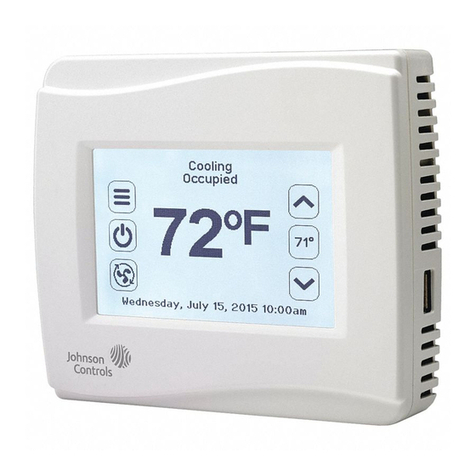
Johnson Controls
Johnson Controls TEC3010 installation instructions
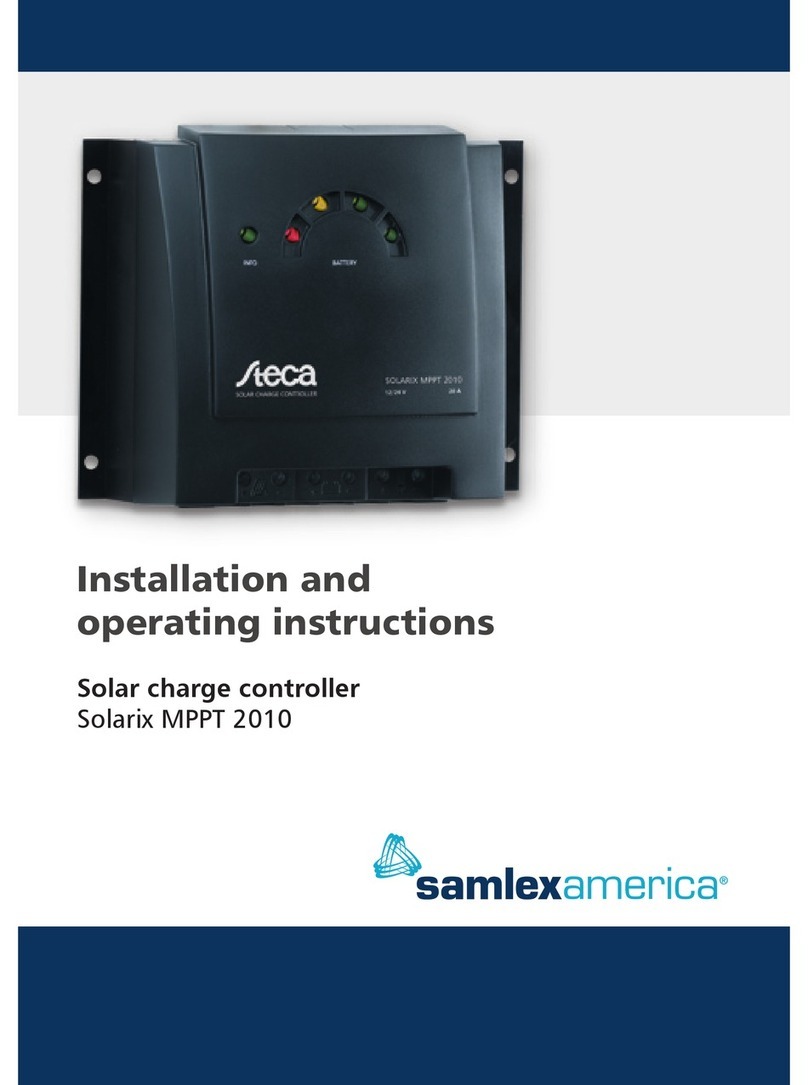
Samplex America
Samplex America Solarix MPPT 2010 Installation and operating instructions
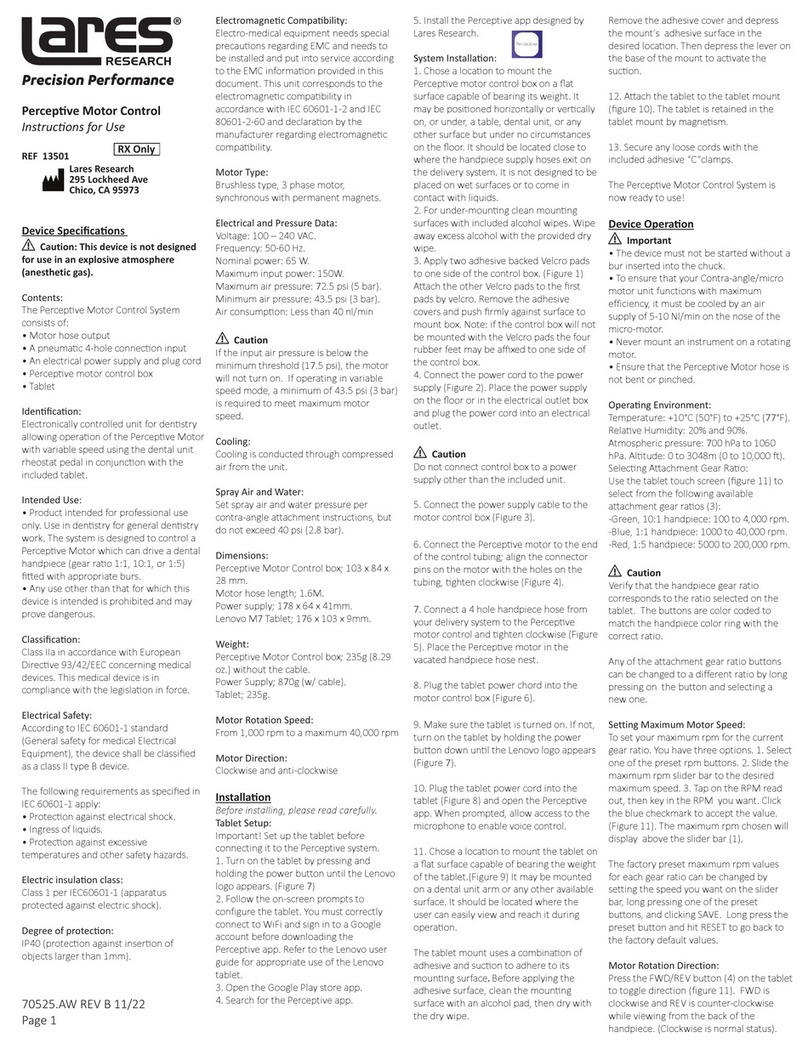
Lares
Lares 13501 Instructions for use
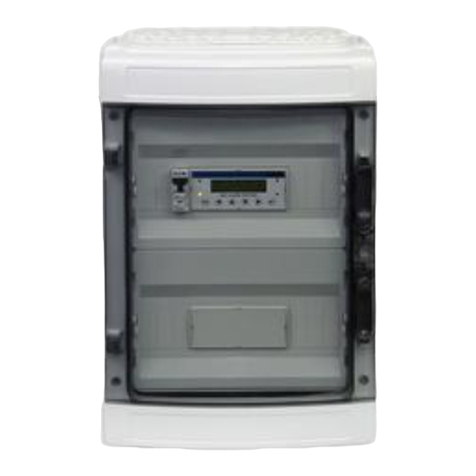
MSR ELECTRONIC
MSR ELECTRONIC Intec Controls PolyGard 2 GC-06 Series user manual

BONKOTE
BONKOTE PATRIOT instruction manual
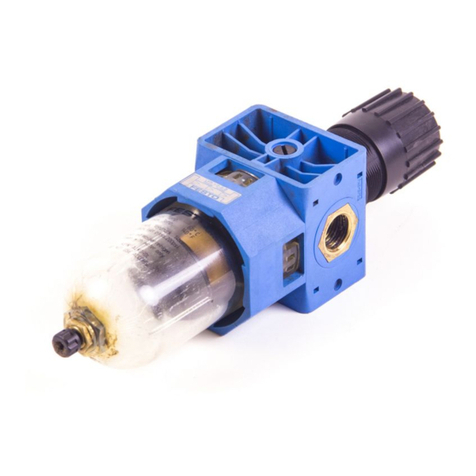
Festo
Festo LFR-B Series operating instructions
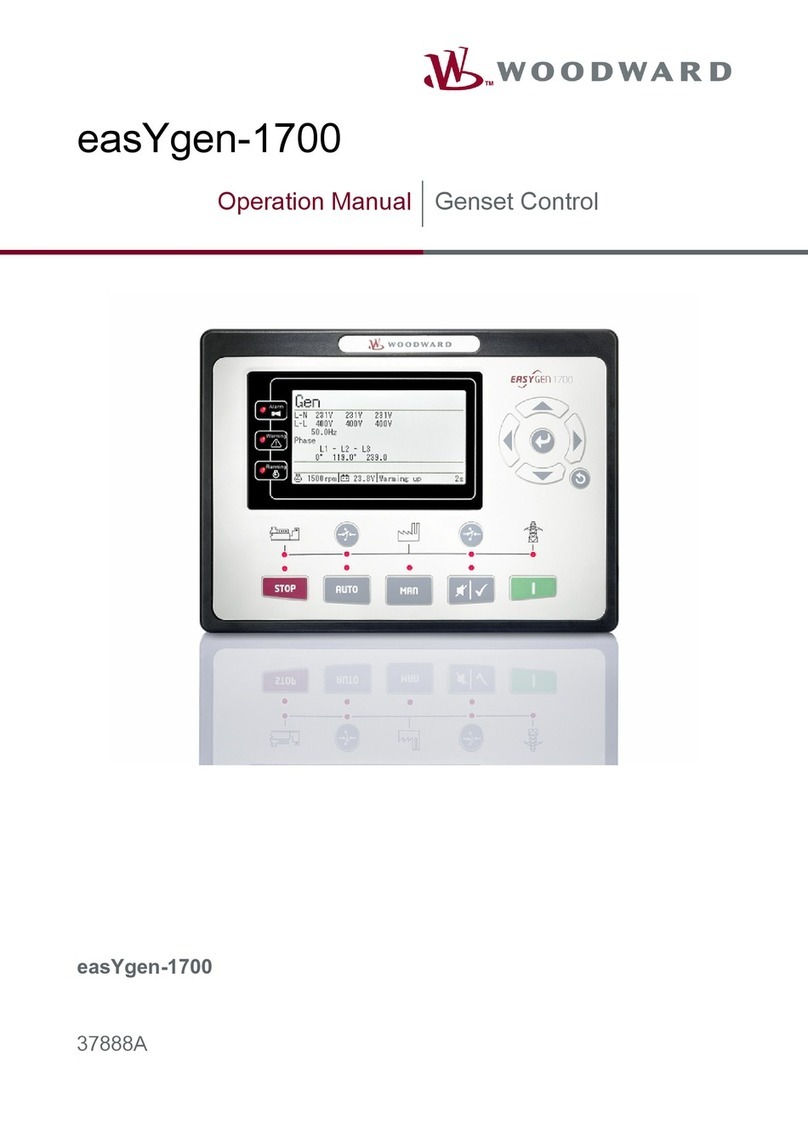
Woodward
Woodward easYgen-1700 Operation manual
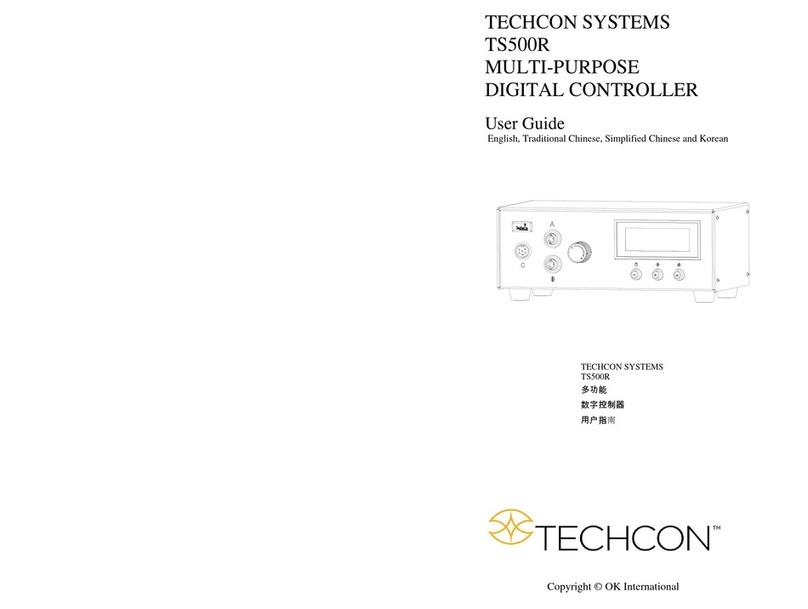
TECHCON SYSTEMS
TECHCON SYSTEMS TS500R user guide
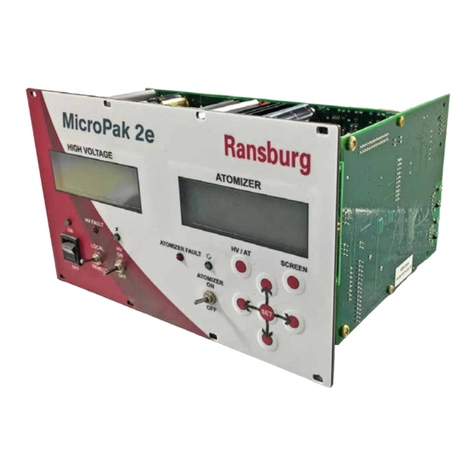
Carlisle
Carlisle Ransburg MicroPak 2e Service manual

Southwire
Southwire Surge Guard 10176 Installation & operating instructions
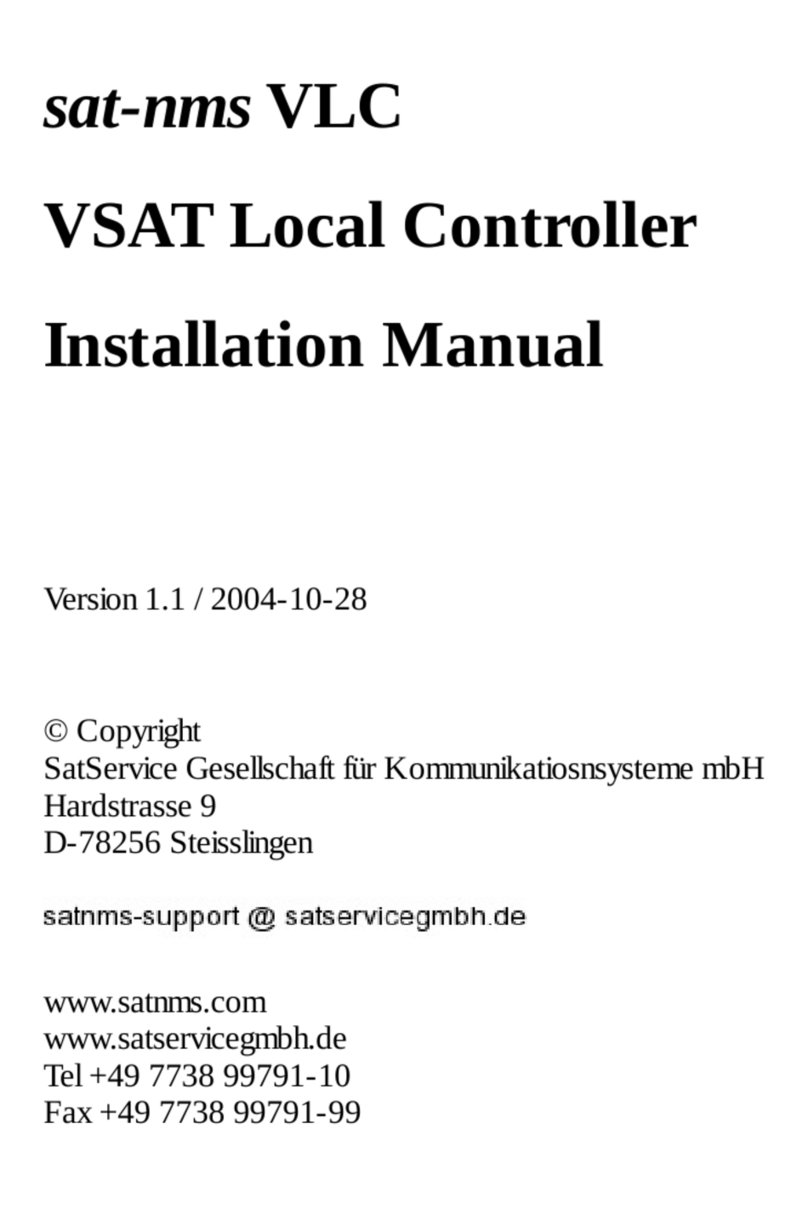
Calian
Calian SatService sat-nms VLC installation manual
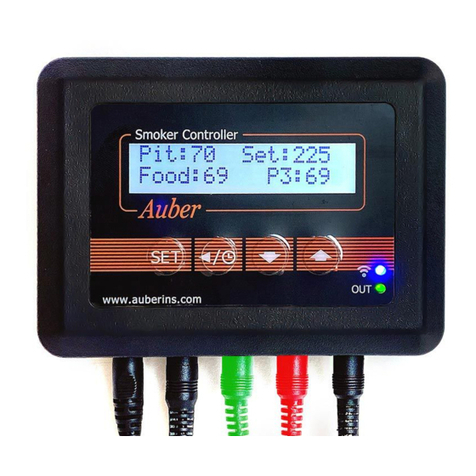
Auber Instruments
Auber Instruments SYL-3615 instruction manual

